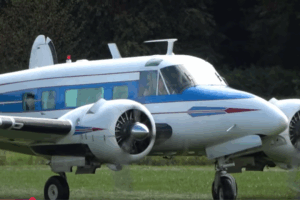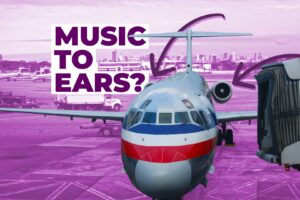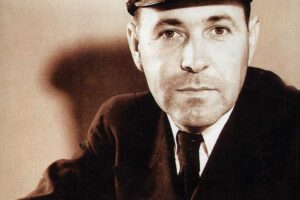The Boeing clipper is widely regarded at the summit of flying boat technology. It inaugurated the world’s first transatlantic heavier-than-air service, and carried passengers and cargo around the globe in the 1930’s and 1940’s.
Large, luxurious, and reliable — and with an astounding range of 3,500 statute miles — the B-314 made intercontinental passenger airline service a practical reality.

The development of the B-314
Early in 1936, Pan American solicited proposals for the next generation airliner for Atlantic service, and to stimulate interest among aircraft manufacturers, Pan Am offered a $50,000 cash prize for the winning design.
Sikorsky responded with a design that would eventually be developed as the S-44, which met Pan Am’s requirements for speed and range but was rejected because it carried too few passengers. (Three S-44’s would later be used by American Export Airlines, which competed with Pan Am across the Atlantic from 1945-1950.) Consolidated Aircraft proposed a four-engine ship based on its PB-Y Catalina flying boat (which would later gain fame as an anti-submarine and search-and-rescue aircraft during World War II), but the Consolidated design was also rejected as too small.
Martin, which made the M-130 China Clipper, proposed a model known as the M-156, but it was also rejected by Pam Am, leaving Glenn Martin furious; despite owing much of its success to the China Clipper. Pan Am had purchased only three of the M-130 aircraft. Martin had taken a loss on such a small production run, which he expected to make up with future business for the airline.
The winner of Pan Am’s competition was the Boeing Aircraft Company of Seattle, Washington, which was initially reluctant even to submit a proposal. But under the leadership of a relatively young engineer named Wellwood Beall, Boeing eventually constructed a ship widely recognized as the apex of flying boat design.
On June 31, 1936, Pan Am signed a contract for six of the Boeing 314 clippers, with an option for six more.
Boeing B-314 Passenger Accommodations
The B-314 could carry 74 passengers and 10 crew, although in overnight sleeper configuration, the ship accommodated 40 passengers in seven luxurious compartments, including a 14-seat dining room and a private “honeymoon suite” at the tail end of the plane.



Boeing B-314 Technical Details
A giant aircraft for its day, the B-314 weighed over 40 tons and had a wingspan 3/4 that of a Boeing 747-100.
- Length: 106′
- Wingspan: 152′
- Max Gross Takeoff Weight: 82,500 lb B-314, 84,000 lb B-314A
- Engines: Four Wright GR-2600 Twin Cyclone, 14 cylinder radial engines (1,500 hp B-314, 1,600 hp B-314A)
- Propellers: Hamilton-Standard 3-blade, full-feathering constant speed (variable pitch), 14′ diameter
- Fuel capacity: 4,246 gallons B-314, 5,446 B-314A
- Crew: 10
- Maximum Speed: 199 mph
- Cruising Speed: 183 mph
- Service Ceiling: 13,400 ft B-314, 19,600 ft B-314A
- Range: 3,500 miles B-314, 5,200 miles B-314A

Among the technical innovations pioneered by the B-314 were the fully-feathering propellers insisted upon by Pan Am Chief Engineer Andre Priester. And important safety feature which would be incorporated in virtually all subsequent variable-pitch propellers, the full-feathering props also allowed mechanics to take advantage of the B-314’s unparalleled in-flight engine access made possible by the wing’s thick chord. The 314’s wing was thick enough to allow access through a walkway to the engines in flight, where the fully-feathering props made it possible for a mechanic to perform repairs in flight. Between June, 1939 and June, 1941, 431 in-flight engine repairs were performed by B-314 engineers.
Over the course of their careers, the B-314’s operated by Pan American made approximately 5,000 ocean crossings and flew more than 12.5 million miles, and each of Pan Am’s Boeing clippers accumulated mor ethan 18,000 flight hours. During World War II alone, B-314’s carried more than 84,000 passengers, almost all of whom were on journeys of importance to the war effort.



The Boeing Clippers
Operated by Pan American Airways (PAA)
Model B-314
- NC-18601 – Honolulu Clipper
- NC-18602 – California Clipper (renamed Pacific Clipper for a few months in 1941)
- NC-18603 – Yankee Clipper
- NC-18604 – Atlantic Clipper
- NC-18605 – Dixie Clipper
- NC-18606 – American Clipper
Model B-314A
- NC-18609 – Pacific Clipper (renamed California Clipper for a few months in 1941)
- NC-18611 – Anzac Clipper
- NC-18612 – Cape Town Clipper
Operated by British Overseas Airways Corporation (BOAC)
Model B-314A
- NC-18607/G-AGBZ – Bristol
- NC-18608/G-AGCA – Berwick
- NC-18610/G-AGCB – Bangor






